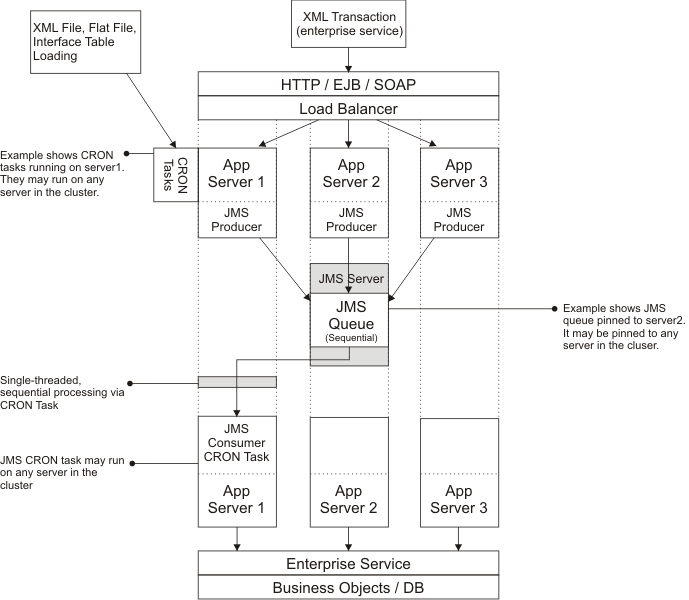The sequential queue receives JMS producer messages and processes the JMS consumer messages.
The following diagram shows one example of a cluster configuration on application servers.

In the example, three application servers exist in the clustered environment. The sequential JMS queue is pinned to one member of the cluster.
The processing occurs when the integration framework receives enterprise service messages by using HTTP, enterprise beans, and SOAP actions. The load balancer directs the application server to drop enterprise service messages into the sequential queue. Each member of the cluster places messages into the queue, which exists on one member of the cluster.
An integration cron task delivers enterprise service messages from flat or XML files and interface tables. The cron tasks that place messages into the queue can run on any server in the cluster. Once messages are in the queue, the application server that is running the JMS consumer cron task processes messages in a sequential order.
Unlike the continuous queue, there is no multi-threading of messages by design. A cluster implementation does not significantly impact the processing performance of messages that process through the sequential queue.